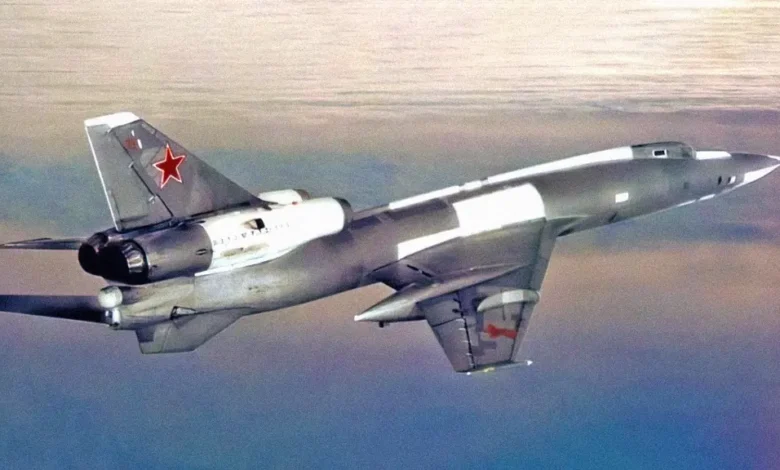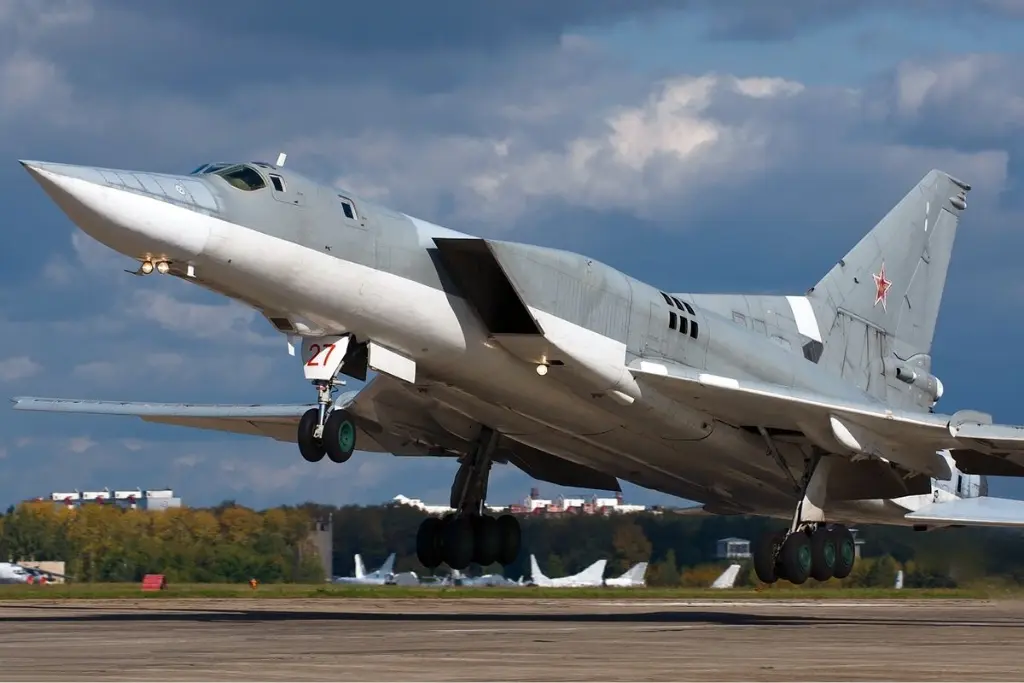Tupolev Tu-22 “Blinder”

The Tupolev Tu-22 “Blinder” was the first Soviet supersonic bomber, developed in the late 1950s and entering service in the early 1960s. Designed for high-speed, high-altitude bombing and reconnaissance, the Tu-22 featured a swept-wing design and was used in a variety of roles, including maritime strike and electronic warfare. It was eventually replaced by the more advanced Tu-22M “Backfire”.
Fact Sheet
| Role | Supersonic Bomber / Reconnaissance |
|---|---|
| Manufacturer | Tupolev Design Bureau |
| First Flight | June 21, 1958 |
| Service Entry | 1962 |
| Crew | 3 |
| Number Built | 311 |
Specifications
| Length | 41.6 m (136 ft 6 in) |
|---|---|
| Wingspan | 23.17 m (76 ft 0 in) |
| Height | 10.13 m (33 ft 3 in) |
| Wing Area | 162 m² (1,744 sq ft) |
| Empty Weight | 54,000 kg (119,050 lb) |
| Max Takeoff Weight | 92,000 kg (202,825 lb) |
| Powerplant | 2 × Dobrynin RD-7M-2 turbojets (35,275 lbf each) |
| Max Speed | 1,510 km/h (938 mph, Mach 1.42) |
| Range | 2,400 km (1,491 mi) |
| Service Ceiling | 13,300 m (43,600 ft) |
Armament & Defensive Equipment
| Guns | 1 × 23 mm tail cannon |
|---|---|
| Bomb Load | Up to 6,000 kg (13,230 lb) of bombs or missiles |
| Aiming Equipment | Radar and optical bombsight |
Notable Features
- First Soviet supersonic bomber
- Swept-wing design for high-speed performance
- Used for bombing, reconnaissance, and maritime strike
- Exported to Iraq and Libya
- Replaced by the Tu-22M “Backfire” in Soviet service

The Tupolev Tu-22 (NATO reporting name: “Blinder”) was a supersonic jet bomber and reconnaissance aircraft developed by the Soviet Union. While it was a significant step forward in Soviet aviation, its complex and difficult development and notoriously challenging flight characteristics made it a platform that was both ambitious in design and frustrating in operation.
A Troubled Supersonic Pioneer
The Tu-22 was conceived in the mid-1950s as the Soviet Union’s first supersonic bomber, a counterpart to the American Convair B-58 Hustler. Its design was a radical departure from its predecessors, featuring a sleek, delta-shaped main wing with a large sweep angle and two massive, powerful turbofan engines mounted on the rear of the fuselage, one on each side of the vertical stabilizer.
Despite its advanced features, the Tu-22 was plagued with design flaws and performance issues. Its nickname, “Blinder,” was not just a NATO designation, but an ironic nod to its poor forward visibility, especially from the cramped, tandem-seated cockpit. Soviet aircrews disliked the aircraft immensely, referring to it by grim nicknames such as “Shilo” (Awl) due to its sharp-pointed nose, or “The Man-Eater.”
Pilots found the Tu-22 difficult to fly and prone to accidents, particularly during takeoff and landing. Its high landing speed and a tendency to “pitch up” on final approach made it a demanding and dangerous aircraft to operate.
Service and Variants
The Tu-22 entered service in 1962, but its operational life was marked by a constant series of upgrades and modifications to correct its design flaws. It was built in a number of variants for different roles:
- Tu-22A/B (Blinder-A): The initial production bomber variant.
- Tu-22R (Blinder-C): A reconnaissance and electronic intelligence (ELINT) variant, which was more widely used than the bomber due to its reliability issues in the strike role.
- Tu-22K (Blinder-B): The most capable and important variant, equipped to carry a single Kh-22 (AS-4 “Kitchen”) anti-ship cruise missile. This version was a key component of the Soviet Naval Aviation’s anti-carrier mission.
- Tu-22P (Blinder-E): An electronic warfare and jamming variant.
Operational History and Export
The Tu-22 never saw extensive combat with the Soviet Air Force. Its primary role was as a patrol and reconnaissance aircraft, with its presence in Soviet Naval Aviation often used to test the reaction of NATO forces.
The “Blinder” did see limited combat with its export customers, primarily Libya and Iraq.
- Libyan Air Force: Libyan Tu-22s were used for bombing missions against Tanzania and Uganda in the late 1970s and were later used against Chad in the 1980s. They were a psychological weapon, as the supersonic raids often struck deep inside Chadian territory.
- Iraqi Air Force: Iraqi Tu-22s were used extensively in the Iran-Iraq War to bomb cities and oil facilities. A number of them were shot down by Iranian fighter aircraft or air defenses, revealing the Tu-22’s vulnerability against a modern air force.
Retirement and Legacy
The Tu-22 was retired from Russian service in the mid-1990s, with all of them being either scrapped or put into storage. It was superseded by its more advanced, variable-geometry successor, the Tu-22M “Backfire.” The two aircraft are often confused, but they are entirely different designs.
The Tu-22’s legacy is a mixed one. While it was a flawed design, it was a crucial step in Soviet aviation, providing invaluable data on supersonic flight and paving the way for more successful bombers like the Tu-22M. Its export to countries in the Middle East and Africa also gave it a brief but notable combat history that the Soviet Air Force never had.



